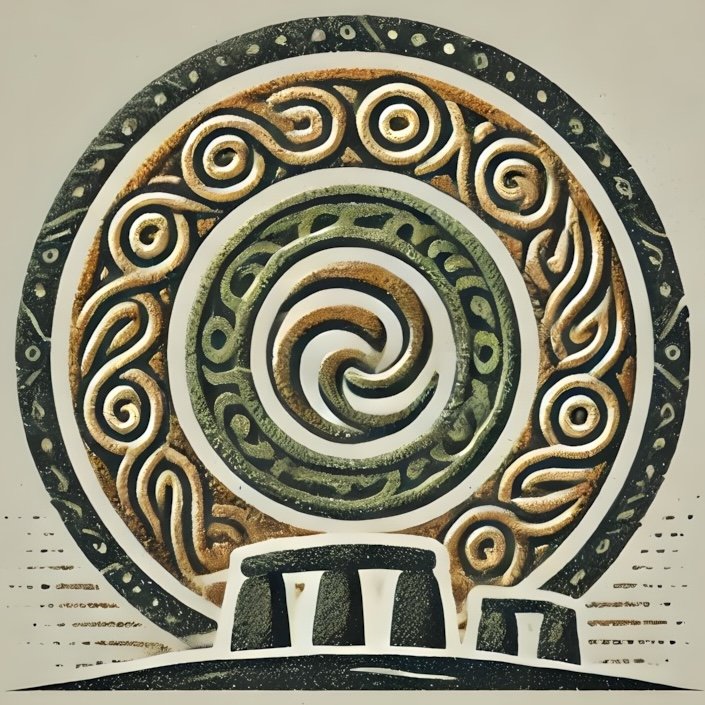Introduction to the La Tène Culture
The La Tène culture, flourishing from around 450 BC to the Roman conquest in the first century AD, marks a pivotal era in European prehistory, particularly in the regions that would become known as Celtic territories. Characterized by its rich artistic expression and complex social structures, the La Tène culture is often associated with the Celts, a group of tribes that shared linguistic and cultural traits across Europe. In Ireland, the La Tène style represents a significant transformation in artistic expression, social organization, and cultural identity, setting the stage for the rich tapestry of Irish history and mythology that would follow.
Characteristics of the La Tène Style
The La Tène style is distinguished by its intricate metalwork, decorative motifs, and a keen sense of craftsmanship. Artifacts from this period showcase a unique blend of functional and ornamental design, with items such as weapons, jewelry, and tools often adorned with swirling patterns, animal forms, and geometric shapes. The use of gold, silver, and bronze highlights the advanced metallurgical skills of the time, while the emphasis on curvilinear forms reflects a deep connection to nature and the spiritual world.
Common features of La Tène art include:
– Spirals and Swirls: These motifs symbolize the cyclical nature of life and the cosmos, often interpreted as representations of the spiritual journey.
– Animal Imagery: The depiction of animals, particularly horses, boars, and birds, suggests a reverence for the natural world and its connection to Celtic mythology.
– Interlace Patterns: These intricate designs, which weave together various elements, are thought to represent the interconnectedness of life, death, and rebirth.
The La Tène style is not merely an aesthetic choice; it reflects the values, beliefs, and social structures of the Celtic people, serving as a visual language that conveys their identity and worldview.
The La Tène Influence in Ireland
The arrival of the La Tène culture in Ireland marks a significant shift in the island’s prehistoric narrative. While the earlier Bronze Age culture had laid the groundwork for social complexity, the La Tène period introduced new artistic forms and technologies that transformed Irish society. The influence of La Tène culture can be seen in various aspects of life, from warfare to trade, and even in the spiritual beliefs of the time.
The adoption of La Tène styles and techniques in Ireland can be attributed to several factors, including trade networks with continental Europe and the movement of peoples. As the Celts migrated and settled in Ireland, they brought with them not only their artistic styles but also their social structures, which emphasized kinship, warrior culture, and the importance of chieftains. This period saw the emergence of powerful local elites who utilized La Tène artifacts to assert their status and influence.
Key Archaeological Sites Featuring La Tène Artifacts
Ireland is home to numerous archaeological sites that provide insight into the La Tène culture and its artistic legacy. Some key locations include:
– The Hill of Tara: Often considered the seat of the ancient kings of Ireland, the Hill of Tara is rich in archaeological significance. Excavations have revealed La Tène artifacts, including ornate metalwork and ceremonial items, highlighting its role as a political and spiritual center.
– The Loughnashade Hoard: Discovered in County Armagh, this hoard of La Tène artifacts includes exquisite gold torcs and other jewelry, showcasing the advanced craftsmanship of the time. The items are believed to have been buried as offerings or as part of a ritual.
– The Navan Fort: Located in County Armagh, Navan Fort is another significant site associated with the La Tène period. It was a ceremonial center and is linked to various legends in Irish mythology. The site has yielded numerous artifacts, including weapons and decorative items.
– The Corleck Head: This remarkable stone head sculpture, found in County Cavan, is a striking example of La Tène artistry. Its intricate design and symbolic features provide insight into the spiritual beliefs of the time.
These sites not only offer a glimpse into the material culture of the La Tène period but also serve as important landmarks for understanding the social and political dynamics of ancient Ireland.
La Tène Style and Irish Mythology
The La Tène style is deeply intertwined with Irish mythology, reflecting the beliefs and values of the Celtic people. Many La Tène artifacts are thought to have held ritual significance, serving as offerings to the gods or as symbols of power for chieftains. The intricate designs often echo themes found in Irish myths, such as the importance of nature, the supernatural, and the heroic deeds of legendary figures.
For instance, the symbolism of animals in La Tène art resonates with the mythological narratives surrounding figures like Cú Chulainn, who is often associated with the fierce warrior spirit of the Irish. The intertwining of art and mythology suggests that the La Tène style was not merely decorative but served a deeper purpose in expressing cultural identity and spiritual beliefs.
Cultural Exchange and Transformation
The La Tène period was marked by significant cultural exchange, not only within the Celtic world but also with neighboring cultures. The movement of people, ideas, and goods facilitated the sharing of artistic styles and technologies, leading to a dynamic interplay of influences. This exchange is evident in the hybridization of artistic forms, where local traditions blended with continental styles to create a unique Irish expression of La Tène art.
Trade routes connecting Ireland with Britain and continental Europe allowed for the exchange of materials, ideas, and artistic techniques. As a result, the La Tène style in Ireland evolved, incorporating local motifs and themes while retaining its distinctive characteristics. This transformation is a testament to the adaptability and resilience of the Celtic culture, which thrived in a landscape of constant change.
Legacy of the La Tène Style
The legacy of the La Tène style extends far beyond its immediate historical context. It laid the groundwork for subsequent artistic developments in Ireland, influencing the design of early Christian art and the intricate patterns found in medieval manuscripts. The spirals, interlace patterns, and animal motifs that define La Tène art can be seen echoed in the Book of Kells and other illuminated texts, showcasing the enduring impact of this prehistoric style.
Moreover, the cultural and social structures established during the La Tène period continued to shape Irish identity long after the decline of the Celtic world. The emphasis on kinship, heroism, and the spiritual connection to the land remains a cornerstone of Irish culture, resonating through centuries of history and mythology.
As you explore the rich tapestry of Ireland’s past, the La Tène style serves as a vital link between prehistoric artistry and the vibrant cultural heritage that defines the Emerald Isle today. Whether wandering the ancient landscapes of Tara, marveling at the craftsmanship of the Loughnashade Hoard, or delving into the mythic tales of Cú Chulainn, the legacy of the La Tène culture invites you to connect with the spirit of a time when art, identity, and mythology intertwined to shape the very essence of Ireland.

